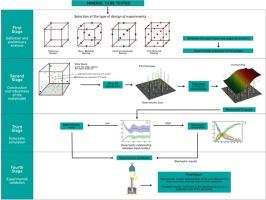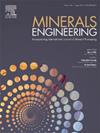Optimizing flotation circuits: A comprehensive approach using design of experiments and stochastic simulation in cycle test validation
IF 4.9
2区 工程技术
Q1 ENGINEERING, CHEMICAL
引用次数: 0
Abstract
Cycle flotation tests have been preferred for obtaining metallurgical projections based on laboratory flotation tests because they can simulate a continuous circuit similar to real flotation plants. However, cycle tests are typically conducted in the laboratory under a limited number of operating conditions, so the behavior of ores in these tests might only partially represent the complexity and variations seen in industry-scale flotation operations. To address this limitation, the current work introduces a methodology that integrates cycle tests with the design of experiments (DoE) and response surface methodology (RSM), as well as stochastic simulation to expand the range of tested conditions and identify optimal regions. The methodology involves four stages: definition and preliminary analysis, construction of metamodels, stochastic simulation, and experimental validation. The proposed approach is illustrated through closed/open cycle tests, covering flotation circuits with rougher, cleaner, and scavenger stages. Various output variables are evaluated, such as weight recovery, overall recovery, kinetics, and concentrate and tail grade. The study reveals that polynomial models were inefficient in fitting the experimental data accurately, leading to the use of Monte Carlo simulation to predict closed-cycle test results, which were later validated experimentally. Ultimately, this research provides valuable recommendations for the appropriate application of DoE and RSM in mineral processing.

优化浮选回路:在循环测试验证中使用实验设计和随机模拟的综合方法
循环浮选试验是根据实验室浮选试验获得冶金预测的首选方法,因为它们可以模拟与实际浮选厂类似的连续回路。然而,循环试验通常是在实验室有限的操作条件下进行的,因此这些试验中的矿石行为可能只能部分代表工业规模浮选操作中的复杂性和变化。为了解决这一局限性,目前的工作引入了一种方法,将循环测试与实验设计 (DoE) 和响应面方法 (RSM) 以及随机模拟相结合,以扩大测试条件的范围并确定最佳区域。该方法包括四个阶段:定义和初步分析、元模型构建、随机模拟和实验验证。建议的方法通过封闭/开放循环测试进行说明,涵盖浮选回路的粗选、精选和扫选阶段。对各种输出变量进行了评估,如重量回收率、总回收率、动力学以及精矿和尾矿品位。研究表明,多项式模型在准确拟合实验数据方面效率不高,因此需要使用蒙特卡罗模拟来预测封闭循环测试结果,随后再通过实验进行验证。最终,这项研究为在矿物加工中适当应用 DoE 和 RSM 提供了宝贵的建议。
本文章由计算机程序翻译,如有差异,请以英文原文为准。
求助全文
约1分钟内获得全文
求助全文
来源期刊

Minerals Engineering
工程技术-工程:化工
CiteScore
8.70
自引率
18.80%
发文量
519
审稿时长
81 days
期刊介绍:
The purpose of the journal is to provide for the rapid publication of topical papers featuring the latest developments in the allied fields of mineral processing and extractive metallurgy. Its wide ranging coverage of research and practical (operating) topics includes physical separation methods, such as comminution, flotation concentration and dewatering, chemical methods such as bio-, hydro-, and electro-metallurgy, analytical techniques, process control, simulation and instrumentation, and mineralogical aspects of processing. Environmental issues, particularly those pertaining to sustainable development, will also be strongly covered.
 求助内容:
求助内容: 应助结果提醒方式:
应助结果提醒方式:


